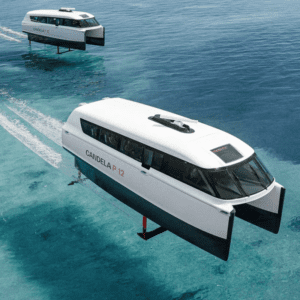If you ever travel, you are either wittingly or unwittingly part of a delicate and complicated morass facing today's tourism destinations: how do we attract and service the greatest number of tourists without causing irreparable change or damage to the destination's resources? A question that is still begging for an answer: Is tourism sustainable? Is the notion of sustainable tourism one that can truly be achieved in a practical, capitalist-minded world? Before we look at a few examples; let's look at some issues related to sustainable tourism.
Sustainable Tourism
Most of us would agree in our travels we want to enjoy ourselves and do it in a way that causes "the least harm". We want to maintain precious resources like air, water, marine habitats and species, animal populations and indigenous peoples. However, in certain cases tourism has been an actor in a tableau vivant of lost resources in various places around the world. A big part of the problem is the lack of any across-the -board definition of sustainable tourism and its elements. Even the UNWTO [World Tourism Organization] struggles to define sustainable tourism. Further, in most development scenarios, sustainable tourism is thought of in terms of whether or not the tourism itself is sustainable [economically viable over a long period of time] not whether the tourism is doing the least amount of harm to resources. This is not to say development impacts are not considered via required regulations [SEQR; etc.]; but clearly the raison d'être of development is capitalism.
As a direct result of infrastructure advancements [as in the United States Interstate Highway System]; advancements in air and sea travel; globalization and technological advances resulting in a world-economy with burgeoning middle-classes; tourism is now one of the largest contributors to the world GDP [estimated at 9-11% of global GDP]. In the United States; tourism is an extremely important industry:
-
In 2011, 7.5 million jobs were supported by the tourism industry.
-
International tourism itself supported 1.2 million jobs.
-
Tourism is the largest United States export not "in a box". That means tourism is a larger export than Hollywood rights fees and Intellectual Property licensing by Apple, IBM etc.
Sobering Facts
When you take a look at sustainable tourism, several looming issues reveal themselves. The rise of "mass tourism" has put enormous pressure on tourism destinations. One place that is still struggling with sustainability might surprise you: The Galapagos Islands. Yes, the place that Darwin visited where he found inspiration for his seminal works on evolution and the place where today you find the Charles Darwin Foundation Research Station. Despite being named one of the world's first UNESCO protected sites and having its surrounding marine areas fall under the protection of a marine reserve, the Galapagos are falling victim to a powerful fishing lobby that has fought against [and successfully defeated] legislation to place limits on the number of sea cucumbers and shark fins that can be harvested. The Galapagos is under-represented on the Ecuadorian government; hence, self-imposed restrictions on the number of tourists that can visit each year have routinely been overrun by more than 50%. This condition is known as "exceeding carrying capacity". When carrying capacity limits are exceeded, there are intense impacts on the area's resources and its ability to provide basic things such as clean water, sewage, waste management, and to house enough humans to service the ever-increasing tourist population. At this moment, several species on the archipelago are extinct including the iconic giant tortoises once observed by Darwin on the Island Floreana.
Another phenomenon on the sustainable tourism front is known as "last chance tourism". This deals with the concept of "disappearing destinations" and impels tourists to see them before they are gone. Sadly, what results is a "gloom, boom, doom" scenario where increased visitation exacerbates existing conditions and accelerates the negative impacts already plaguing the area. An example of this can be found in the Arctic [Churchill, Manitoba, Canada] and the rush to see polar bears in their natural habitat. Climate change has made it possible for cruise liners to traverse deeper and deeper routes while kicking off various emissions [gray water; black water; et al] that are not helpful to the environment. It is believed the only place where we will be able to see polar bears in twenty years is in a Zoo.
There is Hope: Bhutan, a Shining Example
"Leave only footsteps; take only memories."
While the lack of a global, coordinated sustainability plan is troubling; one finds hope in the individual efforts by peoples and countries all over the world. Right here at home, Green-centric initiatives have made their way into the DNA of tourism and hospitality development processes. A cold-fusion of economic favorability married with earth-saving decisions is powering this new development paradigm.
Bhutan, a land-locked state in South Asia, stands as a potential shining example for the concept of sustainable tourism. A place that literally measures the Gross National Happiness of its people, Bhutan has placed certain restrictions on its tourism product that is both sustainable AND profitable. For instance, Bhutan has strict limits on the number of non-Indian visitors. Further, Bhutan requires a certain amount of money spent each day by the visitor and requires visitors to hire and be escorted by a guide their entire stay. This prevents tourists from taking home a "piece" of the destination as is the case with the now threatened ruins of Machu Picchu. In September 2012, Time Magazine named Bhutan as "the last authentic place on earth."
With the excellent example of Bhutan, and the sincere efforts of the members of the Travel and Tourism community, it is possible for truly sustainable tourism to exist. Every step taken in that direction combines to form a new reality. A reality we can proudly pass on to generations to come.
Gavin Landry is a 25-year veteran of the industry. He is a graduate of Cornell University's School of Hotel and Restaurant Administration and Principal of Landry Hospitality Consulting Services, L.L.C. (www.landryhospitality.com); a full-service hospitality consulting practice specializing in hotel development and existing hotel cost and revenue improvement programs. He is an Adjunct Professor at NYU's Preston Robert Tisch Center for Hospitality, Tourism and Sports Management teaching graduate level courses on Tourism Policy Analysis, Tourism Planning, Tourism Product Development and Tourism Principles and Planning. LHCS offers a complimentary financial analysis for hotel properties that want to find new revenues and improve their operating income.












